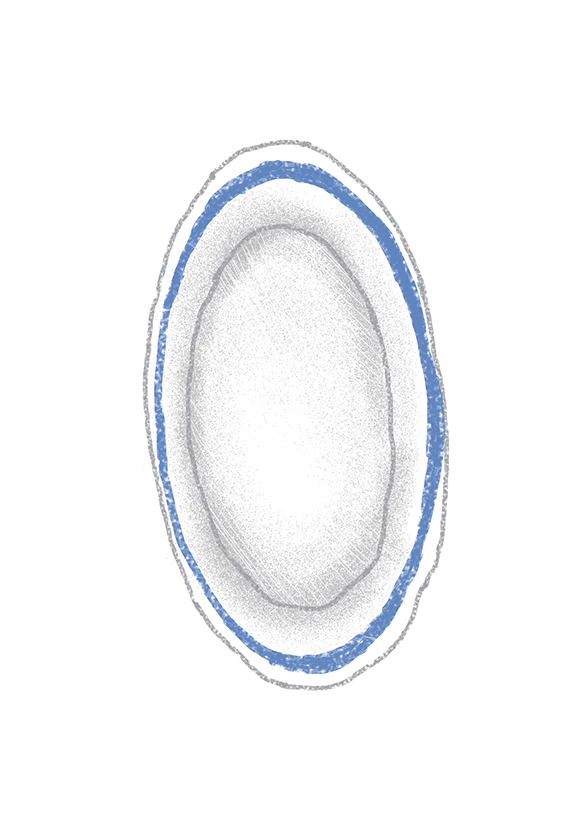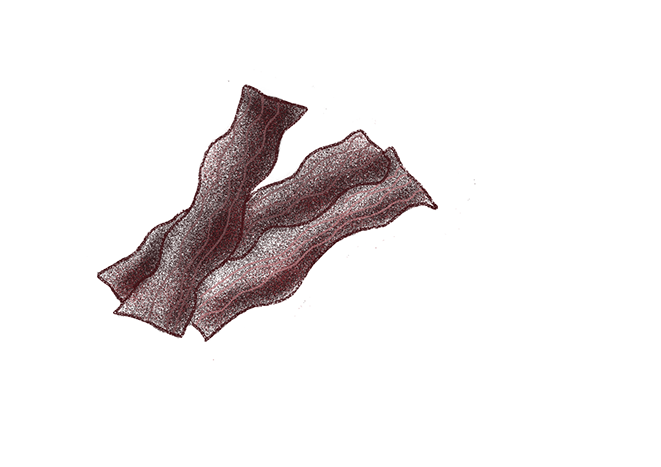he traditional cuisine is what has remained in a daily life of the modern Selkups, unlike the language, songs, and a way of life. Not only did they preserve a lot of dishes, but also accustomed Russian neighbors to their food. Up to the 20th century, virtually the only food that the Selkups ate was fish and game meat. They just had no time for growing vegetables and caring for cattle. Over the centuries, these peoples have invented various ways to cook and prepare fish: it is smoked, salted, air-dried, fried, boiled, dried, and fermented in berries. The Russians and the Cossacks who came to the Ob' lands adopted not only the local secrets of fishing and hunting but also
their recipes.
text:
Alena Ovsyannikova
illustrator:
Lyubov Borisova
T
What is traditional Selkup cuisine and how modern Ostyaks are changing it?
Fish is the essence of life
Lyudmila Denisovna Shadrina lives near Parabel', in the village of Narym. She is half Selkup, like her two sisters. Ludmila takes part in the cultural events of Parabel', writes poetry in Russian and Selkup, and tells local children about the customs and lifestyle of the Ostyaks through her poems and riddles.
Ludmila says there are a lot of modern Ostyaks who do not like fish at all. However, the basic recipes are still passed on to the young generations, and almost everyone, even not Selkup, knows how to cook ukha (traditional Russian fish soup — translator's note) or fry fish. Some families often experiment with new food, spices and change old recipes. For example, they cook burbot in batter with vegetables or Korean fish salad Hoe with sander.
— Now the Russians cook chush' (fresh fish with spices — TN) and believe that the origin of the name is Russian — but it's Selkup and it is translated as frozen fish. In childhood, we smashed a perch or a pike with the butt of an ax and dipped it into salt. Now, sterlet or sturgeon are eaten this way: it is cut, cleaned, and sprinkled with salt and pepper. Those who go fishing in summer cook chapsa. You can't always cook only ukha! Instead, you may catch some small perches or pikes, split them into halves, put on a stick,
and fry.
Senior Selkups can't go fishing and hunting, and usually, their children aren't already interested in it. They buy fish or game meat from the neighbors to cook traditional dishes, and even though in the villages it is sold at quite a low price or simply given away, a lot of people are switching to the products from the store. Lyudmila Denisovna tells that there was no such a problem in her childhood.
— Our father died early, but during the several years after his death, we were taking dried salted fish prepared by him from the attic. Even if it was a hunger year and there was no fish, that dry fish saved us. We had to do whatever we could; we went to fishermen, and they shared some fish. However, when I grew older, I felt embarrassed to ask them, I felt it was like begging. Since I was 9 or 10, I've set the nets myself and I could fish with a rod, a dragnet, and a seine. When my grandson turned 8, we decided that it was time to teach him.
Although Selkup everyday meals could be very simple, the Ostyaks did not lack vitamins. They picked all the edible berries: bilberry, cowberry, blueberry, guelder rose, and raspberry.
— We used to make a small amount of jam because there was no sugar. My mum used to boil blueberry, we stored it, and when we could find sugar, we added it, warmed up the jam, and it turned out to be delicious, – Lyudmila Denisovna says.
The festive meal for the Ostyaks is chinenka, that is, gefilte fish, which is more difficult to cook. Ide or pike is scaled, its head is cut off, meat is taken out and minced, and then the skin is turned inside out keeping the pelvic fins to hold the shape. When the giblets are being pulled out, one should make sure that the bile doesn't burst out. Onion, garlic, salt, pepper, egg, and uncooked rice are added to the minced fish fillet. The skin is filled with this mixture and then baked in an oven.
— On holidays, people bake pies with nelma or burbot. You can't imagine a table laid without cutlet, then or now, — Lyudmila Denisovna says, — My daughter cooks them excellently and even my grandson can. Before the meat grinder hadn't been spread, we used to mince fish finely. Fish wasn't fried very often but when it was, fish fat was used because vegetable oil was expensive.
We go to Narym to meet with Lyudmila's sister Raisa. It is she who loves cooking most in the family and can't imagine her life without fish. Raisa has cooked porsa, Selkup ukha made from dried fish, and shared the recipes of dishes that are common in her family.
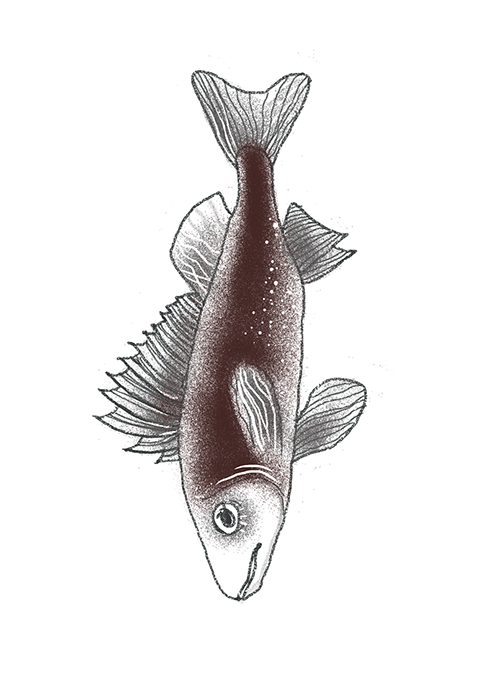
en
The Selkups:
save as...
About
the Project
CONTEXT
TRADITIONS
TROUBLES
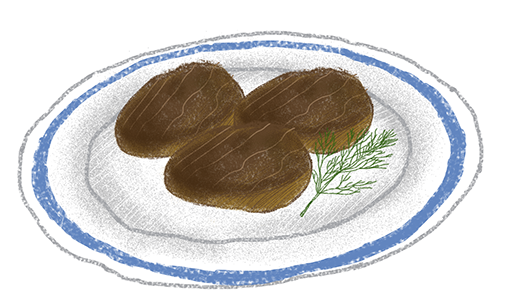
Wood-grouse cutlets
Wood-grouse meat is minced. In order to soften the meat, bread-crumb mashed in milk is added as well as an onion, an egg, and a raw grated potato. Salt and pepper are added to the mixture, it is stirred, and then cutlets are formed out of it. The meat cutlets used to be fried in animal fat and vegetable oil mixed in the ratio of one to one, or in fat from fish guts, which the Ostyaks found really healthy.
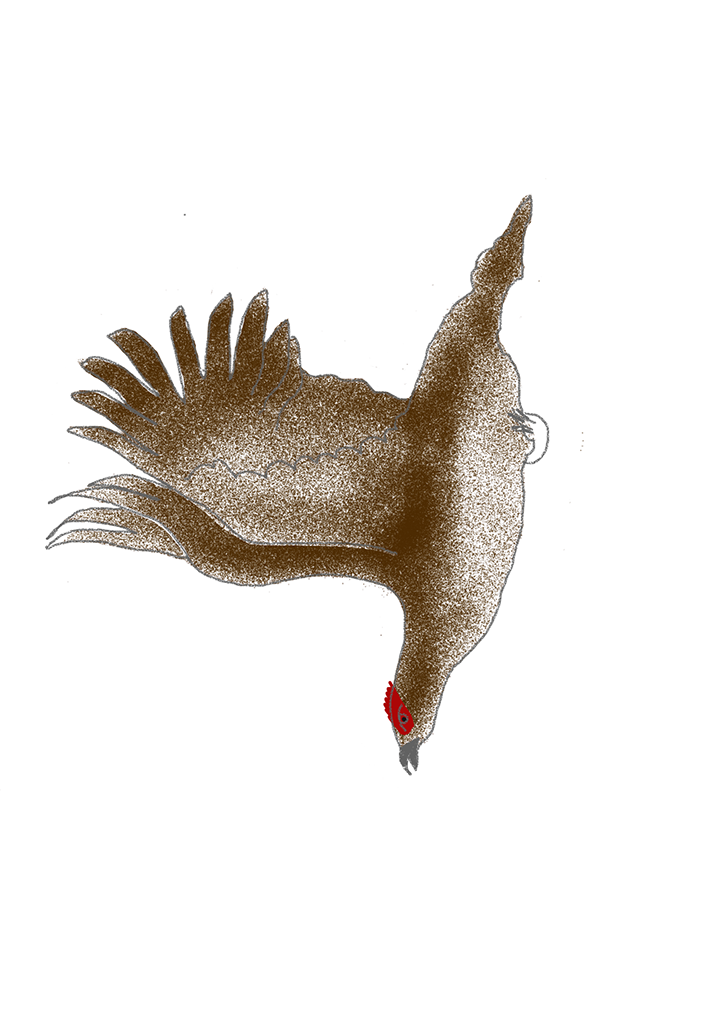
Fish Soup (Ukha) with three types of fish
Perch, pike, ruffe or crucian carp are most commonly used to prepare this kind of ukha. Each fish is boiled for 25-30 minutes. First, crucian carp is scaled, insides with suya (fat) are cleaned out, and it is important to prevent bile from bursting out. The fish is boiled and removed, then the soup is strained. Pike itself is not scaled as it makes the soup nourishing but all the insides are cleaned out. After that, the fish is added to the soup. The head and the tail may be added in pieces as well. Then the soup is strained again. Perches are not gutted and not scaled. Salt, pepper, and bay leaf are added to taste. The fish can be served separately and the soup can be drunken out of a mug. Fish fillets and potato can be put in the soup as well.
Dough (Kalaches) fried in fish fat
The dough is made of water, flour, baking soda, and salt. Kalaches are fried in fish fat in a pan or baked in an oven.
Clear fish jelly (aspic)
To prepare aspic, scale and 2-3 fish heads (perch, carp, ide or pike) are placed in a pan with 1.5 liters of water. When the water begins to boil, a pan cover is taken off to let the water evaporate partially. The aspic should be boiled for about 45 minutes in total. The resulting soup is strained and put in a cold place; the pieces of cold fish, egg, and greens
may be added.
Fried fish
The Ostyaks love frying fish, especially carp, chebak (Siberian roach — TN), pike, and sander, in a frying pan. A small fish is fried whole, a big one — in pieces. Fish need to be rolled in flour and put in a frying pan. It is fried for 10 minutes. Some lard and onion may be added. Men love cooking this dish due to its simplicity and satiation.
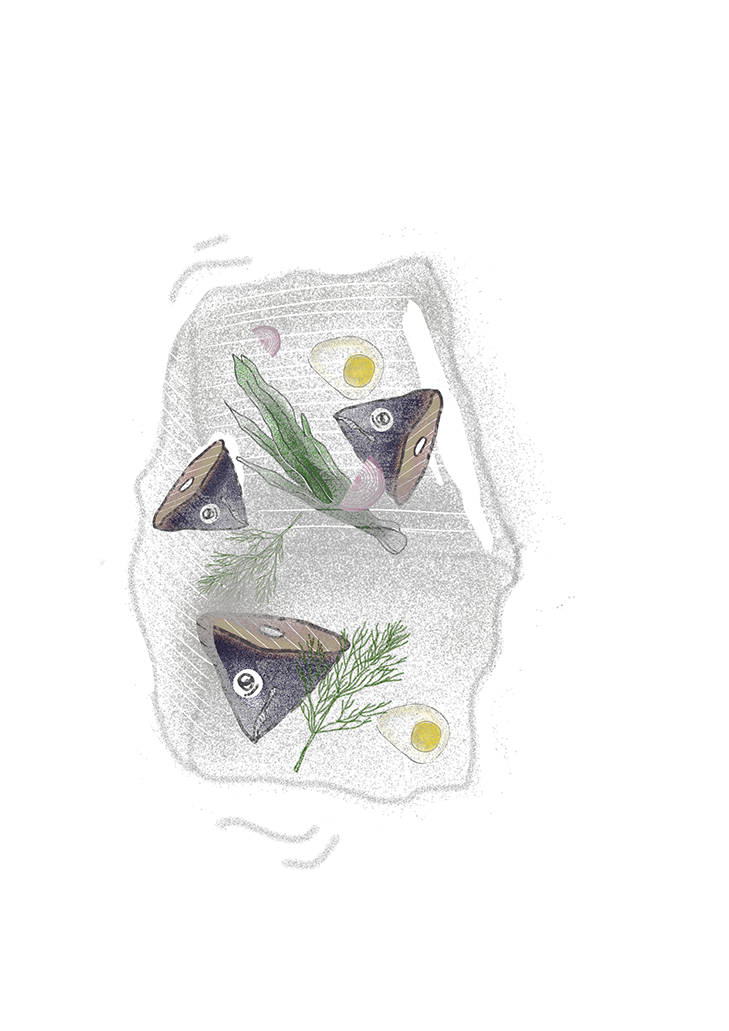
Fish Stew “Varka”
If on a weekday there were a lot of fish caught in a Selkup family, a housewife could cook varka. Carp, ide or pike are used to cook it. Caviar is removed; giblets and milt are put in a pan, where it's stewed in its own fat. Finally, salt, pepper, and onion are added. Varka was eaten with black bread.
Dried moose meat
Moose meat is cut into thin strips, and then it is salted and dried. This meat is thought to be dietary. Elks are rarely hunted so people have to arrange with hunters in advance.
